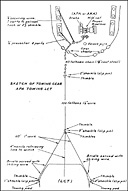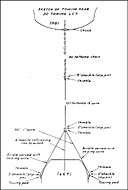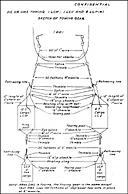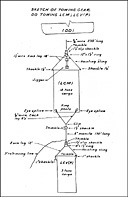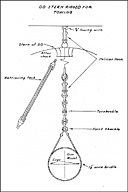
Chapter XIV
Towing and Fueling Landing Ship Tanks, Landing Craft and Landing Boats
Index
| Section 1. | General |
| Section 2. | APA (AKA) Towing an LST, LSM, LCT and Landing Boats |
| Section 3. | LST Towing an LCT(5) or LCI(L) |
| Section 4. | Towing Landing Boats |
| Section 5. | APA (AKA) Fueling Other Vessels at Sea |
| Section 6. | Fueling Landing Boats at Sea |
Section 1. General
- Towing and Fueling Landing Ship Tanks, Landing Craft and Landing Boats:-- Standard Procedures for towing and fueling LSTs, LCTs and the various landing craft have been developed as the result of practical experience. Due to the ever changing nature of the ships and gear involved this procedure will no doubt have to be modified and added to as necessity dictates. Therefore, recommendations and comment will be welcome to improve this present procedure. It should always be borne in mind that there is no substitute for good seamanship and common sense in carrying out the following.
Section 2. APA (AKA) Towing an LST, LSM, LCT and Landing Boats
-
Preparation:-- APA (or AKA) Towing an LST or LSM.
- Provide line throwing gun, with spare cartridges, arbors, and line reels at towing station.
- Provide 75 fathoms 2" messenger line with 75 fathoms 4" messenger line bent on. Outboard end of 4" messenger to have 2" shackle bent on.
- Have towing wire ready for running with shackles laid out ready to shackle to LST towing wire.
- Overhaul and rig pelican hook for towing wire.
- Provide acetylene torch for use in emergency.
- Provide tools, chafing gear, etc.
- Provide signal details at towing station for direct communication with LST.
- Man telephone to bridge.
- Preparation LST.
